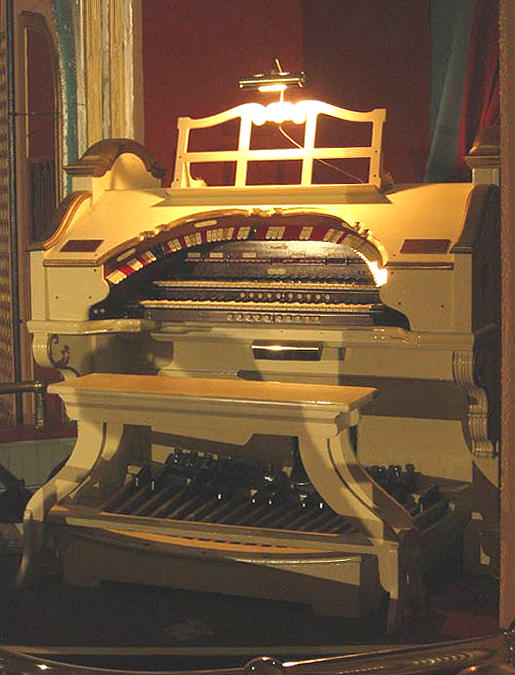When I began playing for silent films while at NYU film school I made a point of meeting all the accompanists in NYC. It was at the Carnegie Hall Cinema that I met theatre organist and composer Lee Erwin. I got to hear him accompany films on theatre organ for a number of years before the organ sound left the musical landscape of classic film in NYC.
I’d go to the Carnegie to hear him play for films, or to hang out and pick his brains about film accompaniment technique. I heard him play at the Bleecker Street Cinema, which had an electric organ in it, and at one or possible two of the shows he did in the ‘80s at the Beacon Theatre. I heard him play at the Cathedral of St. John the Divine for the summer series he did there. I think there were also a couple shows he did at MoMA where he arranged with Baldwin to bring in one of their electronic/digital theatre organs as well.

There may have been other silent film events in NYC at the time with other organists. I don’t really remember. But my impression during that decade was that as a classic film fan you got to hear both piano and organ at silent film screenings held around in the city. And that Lee Erwin was one of the main people playing for or getting organ heard for silents during those years.
The Carnegie Hall Cinema, which had been around for many years as an art/repertory theater, gained a theatre pipe organ in 1977. The New York Theatre Organ Society (NYTOS) owned and installed the 2-manual “Ben Hall” Wurlitzer. The book Repertory Movie Theaters of New York City by Ben Davis (McFarland, 2017) states the organ had its maiden voyage at the venue that year with Lee playing for the 1926 Camille starring Norma Talmadge. And then, according the NYTOS website’s page for the instrument, the Wurlitzer was removed in 1986 for theater renovations. Those renovations involved a takeover by Cineplex Odeon (remember them?) and a format change away from classics and art-house fare upon its reopening in 1987.
The Bleecker St. programmed fewer silents as the ‘80s wore on, and eventually closed.
The Cathedral series continued for some years every summer. I don’t recall the year it ended and will update this post when I find out, but I know it continued through the 1980s. The Cathedral silents series had always been presented as once-a-week programs. The series was very popular and played to packed houses.
As often happens, there was a change at the top in terms of the Cathedral’s public programming decision-maker. What Lee told me was that the new person in charge had the idea of doing the series in a “festival-style” schedule. This way cost and the work of setting up and putting away chairs every week could be removed. And so, one summer, all the films were shown on consecutive days in a clump, and the audience turnout suffered. And so the series ended.
Until the late 2000s, the sound of the theatre organ would be absent from silent film screenings in Manhattan. There were, I’m sure, a handful of exceptions. Classic and repertory film program diminished in a time that saw the rise of home video on VHS and cable television and the closing of a number of NYC’s repertory houses. This began to pick up again in the early to mid 1990s, and picked up more steam when the internet hit in the late 1990s, thankfully, but NYC remained a piano-only city for silent film screenings.
My final post on the sound of the theatre organ at silent film shows in NYC — which I’ll post on July 5 — will cover what happened over the last fifteen years or so, and the part I may have played in that. Part one of this series of posts is here.